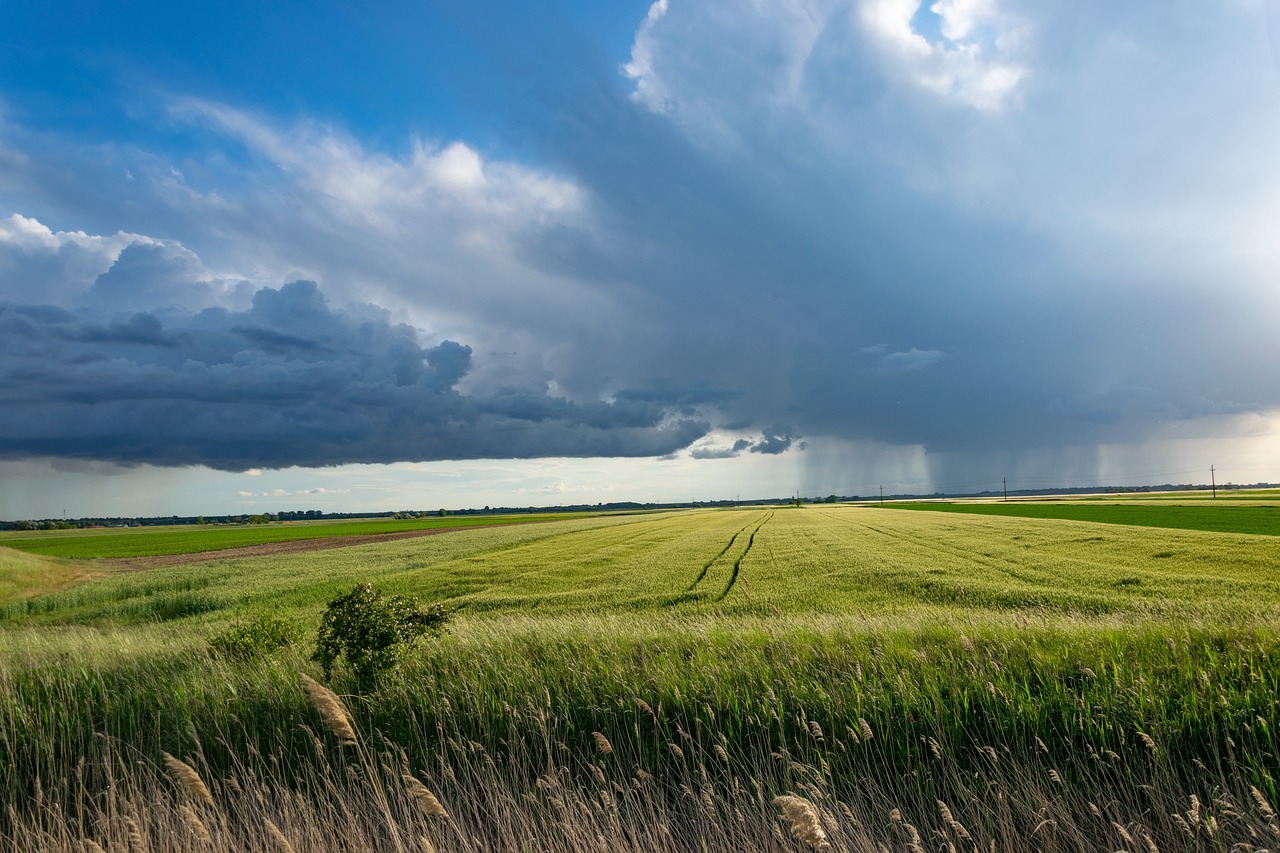Food produced, fertiliser use, and monthly rainfall
| Nguồn: Get IELTS Band 9 Task one Writing Data, Charts and Graphs by Cambridge IELTS Consultants |
Sample 1:
The line graph compares the monthly fruit tonnage and fertiliser usage of a particular farm in 2013, while the bar chart illustrates data regarding precipitation each month in the same year.
Overall, the farm generally consumed more fertiliser during seasons of high rainfall and vice versa, while it produced the most fruit when both fertiliser use and rainfall were at their lowest.
It is clear that fruit production rose steadily from just over 2 tonnes in January to a peak of above 4 tonnes in September before crashing down to the initial 2 tonnes by December. Turning to fertiliser usage, the pattern was largely reversed as the early high was reached at the beginning of the summer, in April, at shy of 1 tonne, after which a marked decline was seen to zero in June and July. Thereafter, fertilizer consumption saw a recovery to around 0.7 tonnes in November before a pull-back to less than 0.5 tonnes by the end of the timeline.
Regarding rainfall, the trend largely resembles fertiliser consumption as figures dropped steadily and considerably from a high of 16mm in February to a low of 4mm in July, August, and September prior to a pull-back to end the period at 14mm in December.
Phân tích
Tư duy đúng khi nhìn vào một bài Writing Task 1 dạng Data không phải là cấu trúc phức tạp hay từ vựng cao siêu, mà là NHÓM THÔNG TIN. Nhóm thông tin nghĩa là gì? Là ưu tiên quan sát nhìn ra những điểm nổi bật nhất, những điểm tương đồng, những điểm duy nhất, những điểm có mối quan hệ với nhau (giống nhau hay đối lập, tỉ lệ thuận hay tỉ lệ nghịch). Hay nói cách khác là không report một cách máy móc, mà cần rõ ràng, có hệ thống, có cơ sở.
Các Bạn hãy nhìn mối quan hệ giữa 3 charts:
Nếu các bạn simplify 2 charts (thực ra tận 3 đường – 2 lines và 1 bar) này thành ĐỈNH và ĐÁY, và tập draw lines nối đỉnh và đáy lại với nhau, Bạn sẽ ngay lập tức nhìn ra xu hướng:
- Weight of fruit produced đang ĐI NGƯỢC LẠI hay ĐỐI XỨNG với cả ‘amount of fertiliser use’ và ‘Rainfall’.
- 2 thằng ‘Fertiliser’ và ‘Rainfaill’ xu hướng tương đối giống nhau là đều có chỗ trũng ở giữa
- Đỉnh của thằng này đang là đáy của thằng kia và ngược lại. Nghĩa là khi ‘weight of fruit’ là đỉnh thì ‘fertiliser’ và ‘rainfall’ là đáy. Còn khi ‘weight of fruit’ là đáy thì ‘fertiliser’ và ‘rainfall’ là đỉnh.
- Tương tự vì ‘fertiliser’ và ‘rainfall’ đi xu hướng giống nhau nên khi thằng này là đỉnh thằng kia cũng là đỉnh, và tương tự với đáy.
Vì thế ta viết được câu Overview:
Overall, the farm generally consumed more fertiliser during seasons of high rainfall and vice versa, while it produced the most fruit when both fertiliser use and rainfall were at their lowest.
Lưu ý: những cái so sánh, bao gồm SO SÁNH NHẤT (the most/ the lowest) và SO SÁNH HƠN (more) sẽ giúp Bạn có (Task achievement) TA tốt hơn rất nhiều so với việc chỉ liệt kê đơn thuần.
Tiếp đến Thân bài, mình sẽ cứ cho ‘Weight of fruit’ và ‘Amount of fertiliser’ vào một đoạn cho dễ nhìn, vì chúng nó cùng là Line graph lại ở chung 1 chart, cùng một hệ đơn vị.
Khi đã xác định được ĐỈNH và ĐÁY thì bạn không cần quan tâm quá nhiều đến những thay đổi nhỏ (những con sóng nhỏ) của charts nữa, mà cứ dùng cấu trúc TĂNG – GIẢM để viết.
Bạn hãy lưu ý cách mình diễn đạt những chỗ đánh số:
- It is clear that fruit production rose steadily from just over 2 tonnes in January to a peak of above 4 tonnes in September… 🡪 Nêu ra ĐÁY và ĐỈNH
- …before crashing down to the initial 2 tonnes by December. 🡪 Dùng ‘before’
- Turning to fertiliser usage, the pattern was largely reversed as the early high was reached at the beginning of the summer, in April, at shy of 1 tonne… 🡪 Nêu lên xu hướng trước
- …, after which a marked decline was seen to zero in June and July. 🡪 Sử dụng cấu trúc ‘after which’
- Thereafter, fertiliser consumption saw a recovery to around 0.7 tonnes in November before a pull-back to less than 0.5 tonnes by the end of the timeline. 🡪 Sử dụng cấu trúc ‘before’
Tiếp theo đến rainfall ở thân bài 2, ta cũng làm tương tự, không cần phải quan tâm đến những thay đổi nhỏ, mà chỉ cần dùng cấu trúc tăng giảm để gộp hết dữ liệu lại:
- : Regarding rainfall, the trend largely resembles fertiliser consumption as figures dropped steadily and considerably from a high of 16mm in February to a low of 4mm in July, August, and September… 🡪 Nêu lên xu hướng trước
- : … prior to a pull-back to end the period at 14mm in December. 🡪 Sử dụng cấu trúc ‘prior to’ – giống với ‘before’
Mình có cả Sample 2 để các Bạn cùng tham khảo. Cách viết cũng y chang Sample 1.
Sample 2:
The provided line graphs compare the monthly fruit production and fertiliser use on a particular farm, while the bar chart illustrates the amount of rainfall in each month of the same year.
Overall, the farm produced the highest fruit tonnage using the least amount of fertiliser when precipitation was at its lowest, and it generally consumed more fertiliser during seasons of high rainfall.
It can be seen that there was a steady and dramatic increase in fruit tonnage, climbing from just over 2 tonnes in January to peak at around 4.2 tonnes in September before plunging to nearly its initial 2 tonnes by December. Turning to fertiliser use, a largely reversed pattern was seen as an early high was reached at nearly 1 tonne in April, after which the figure declined to zero in June and July. Thereafter, fertilizer use remained close to zero until October when a recovery was seen to just below 0.5 tonnes in December.
Regarding rainfall, it broadly correlates with the trend of fertiliser usage as precipitation was highest in early spring (February), at 16 mm, and then the figure fell, dropping to a low of 4 mm in July, August, and September before partially and steadily recovering to end the year at 14 mm.
Vocabulary Highlight:
Sample 1:
The line graph compares the monthly fruit tonnage and fertiliser usage of a particular farm in 2013, while the bar chart illustrates data regarding precipitation each month in the same year.
Overall, the farm generally consumed more fertiliser during seasons of high rainfall and vice versa, while it produced the most fruit when both fertiliser use and rainfall were at their lowest.
It is clear that fruit production rose steadily from just over 2 tonnes in January to a peak of above 4 tonnes in September before crashing down to the initial 2 tonnes by December. Turning to fertiliser usage, the pattern was largely reversed as the early high was reached at the beginning of the summer, in April, at shy of 1 tonne, after which a marked decline was seen to zero in June and July. Thereafter, fertilizer consumption saw a recovery to around 0.7 tonnes in November before a pull-back to less than 0.5 tonnes by the end of the timeline.
Regarding rainfall, the trend largely resembles fertiliser consumption as figures dropped steadily and considerably from a high of 16mm in February to a low of 4mm in July, August, and September prior to a pull-back to end the period at 14mm in December.
Vocabulary:
- compares the monthly fruit tonnage and fertiliser usage (so sánh sản lượng trái cây và lượng phân bón theo tháng)
- illustrates data regarding precipitation (minh họa dữ liệu về lượng mưa)
- generally consumed more fertiliser (thường sử dụng nhiều phân bón hơn)
- seasons of high rainfall (mùa mưa lớn)
- produced the most fruit (sản xuất được nhiều trái cây nhất)
- fruit production rose steadily (sản lượng trái cây tăng đều)
- a peak of above 4 tonnes (đỉnh điểm trên 4 tấn)
- crashing down to the initial 2 tonnes (giảm mạnh xuống 2 tấn ban đầu)
- fertiliser usage (sử dụng phân bón)
- largely reversed (bị đảo ngược phần lớn)
- shy of 1 tonne (ít hơn 1 tấn)
- a marked decline (sự giảm mạnh)
- recovery to around 0.7 tonnes (phục hồi lên khoảng 0,7 tấn)
- pull-back to less than 0.5 tonnes (giảm xuống dưới 0,5 tấn)
- resembles fertiliser consumption (tương tự như việc sử dụng phân bón)
Sample 2:
The provided line graphs compare the monthly fruit production and fertiliser use on a particular farm, while the bar chart illustrates the amount of rainfall in each month of the same year.
Overall, the farm produced the highest fruit tonnage using the least amount of fertiliser when precipitation was at its lowest, and it generally consumed more fertiliser during seasons of high rainfall.
It can be seen that there was a steady and dramatic increase in fruit tonnage, climbing from just over 2 tonnes in January to peak at around 4.2 tonnes in September before plunging to nearly its initial 2 tonnes by December. Turning to fertiliser use, a largely reversed pattern was seen as an early high was reached at nearly 1 tonne in April, after which the figure declined to zero in June and July. Thereafter, fertiliser use remained close to zero until October when a recovery was seen to just below 0.5 tonnes in December.
Regarding rainfall, it broadly correlates with the trend of fertiliser usage as precipitation was highest in early spring (February), at 16 mm, and then the figure fell, dropping to a low of 4 mm in July, August, and September before partially and steadily recovering to end the year at 14 mm.
Vocabulary:
- produced the highest fruit tonnage (sản xuất được sản lượng trái cây cao nhất)
- using the least amount of fertiliser (sử dụng ít phân bón nhất)
- precipitation was at its lowest (lượng mưa thấp nhất)
- generally consumed more fertiliser (thường sử dụng nhiều phân bón hơn)
- seasons of high rainfall (mùa mưa lớn)
- steady and dramatic increase (tăng đều và mạnh)
- peak at around 4.2 tonnes (đỉnh điểm vào khoảng 4,2 tấn)
- plunging to nearly its initial 2 tonnes (giảm mạnh xuống gần 2 tấn ban đầu)
- largely reversed pattern (biểu đồ bị đảo ngược phần lớn)
- fertiliser use remained close to zero (việc sử dụng phân bón gần như bằng 0)


